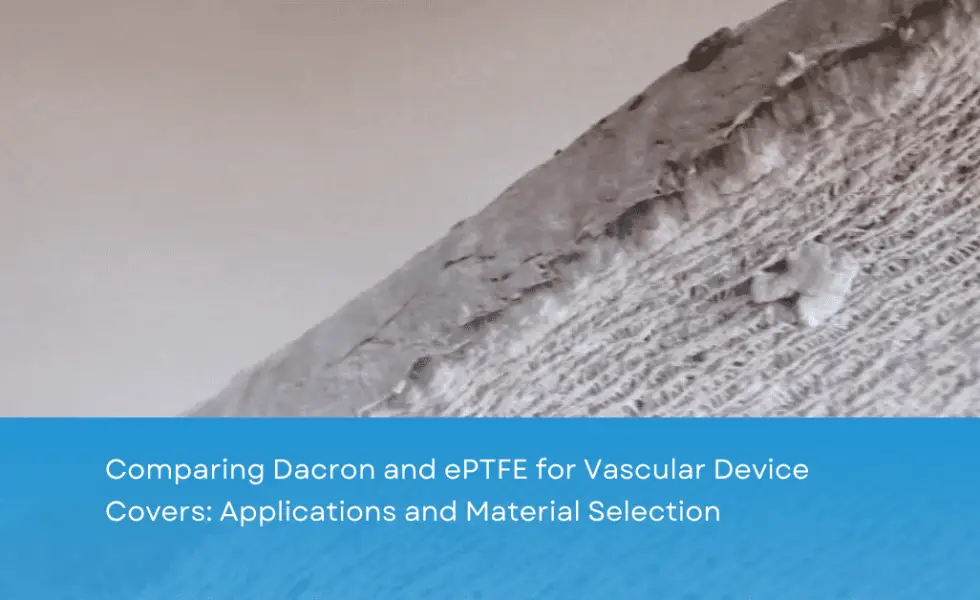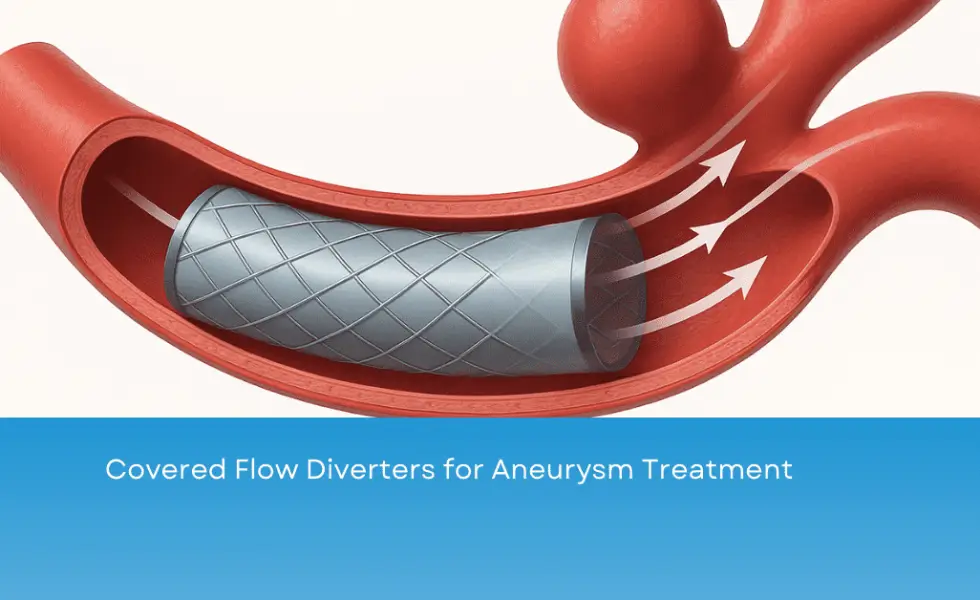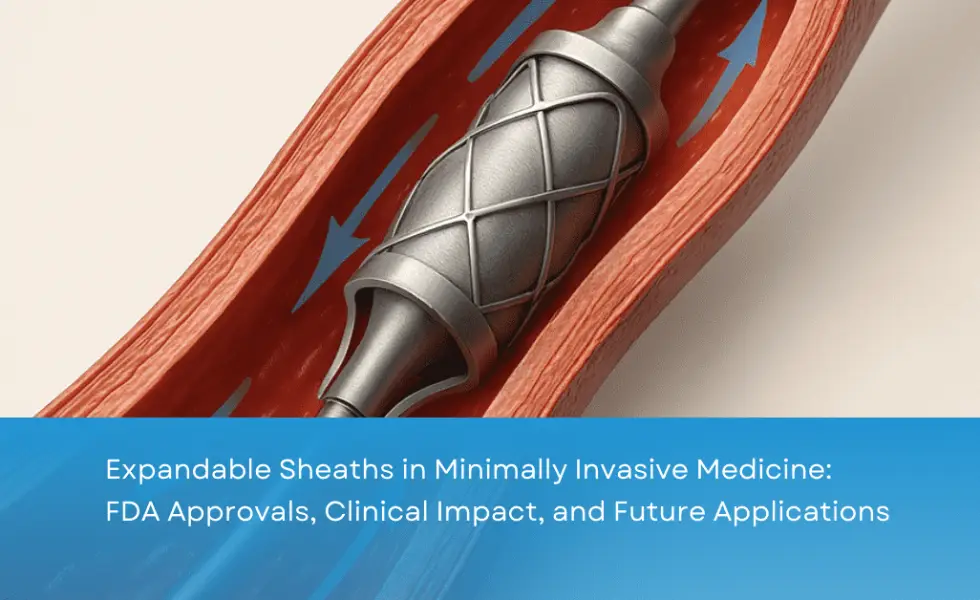Selecting the right material for Dacron vs ePTFE vascular covers is essential for clinical success. Both materials offer unique properties for stents, grafts, and structural heart devices. This article highlights their advantages, disadvantages, and ideal applications to help guide material selection.
Advantages and Disadvantages of Dacron Vascular Covers
Advantages:
Strong Mechanical Properties: Provides reliable structural support.
Porous Structure: Facilitates tissue ingrowth and reduces device migration.
Suitable for Larger Vessels: Ideal for vessels >10mm and structural heart devices.
Ease of Suturing: Simplifies surgical procedures.
Disadvantages:
Initial Inflammation: The woven structure can trigger early inflammatory response.
Potential Complications: May cause thrombosis, intimal hyperplasia, calcification, and chronic inflammation.
Suturing Requirements: Time-consuming and may increase cover thickness.
Advantages and Disadvantages of ePTFE Vascular Covers
Advantages:
Excellent Biocompatibility: Highly compatible with body tissues.
Lower Thrombogenicity: Reduced risk of thrombosis compared to Dacron.
Porous Structure & Controlled Porosity: Promotes tissue integration.
Suitable for Smaller Vessels: Performs well in vessels <6mm.
Disadvantages:
Difficulty Suturing: More challenging to stitch than Dacron.
Potential Complications: Can still lead to intimal hyperplasia and calcification.
Higher Cost: Generally more expensive than Dacron.
Applications of Dacron
Large-Diameter Vascular Grafts (>10mm): High patency rates (>85% at 5 years) and structural support.
Structural Heart Devices: Heart valve sewing rings, annuloplasty rings.
Hernia Repair Meshes: Durable support for abdominal wall defects.
Ligament and Tendon Reconstruction: Used as artificial ligaments or reinforcement.
Sutures: Non-absorbable sutures for long-term wound closure.
Fabric-Covered Stents: Provides durable coverage promoting tissue integration.
Applications of ePTFE
Small-Diameter Vascular Grafts (<6mm): Reduced thrombogenicity and optimized tissue integration.
Hemodialysis Access Grafts: Lower infection rates and easy needle puncture.
Aortic Replacement: Withstands high pressure and flow, customizable for flexibility.
Cardiovascular Patches: Used in congenital heart defect repairs and vessel reconstructions.
Endovascular Stent Grafts: Low profile, conforms to vessel walls, reduces endoleaks.
Soft Tissue Augmentation: Plastic surgery for facial reconstruction and body contouring.
Patches for Vessel Repair: Smaller vessels benefit from lower thrombogenicity and better handling.
Combined Applications
Hybrid Vascular Grafts: Combines Dacron and ePTFE for complex reconstructions.
Composite Hernia Meshes: Leverages both materials for strength and tissue integration.
Conclusion: Choosing the Right Material
The choice between Dacron and ePTFE depends on clinical requirements:
Dacron: Best for larger vessels and high-stress areas due to strength and ease of suturing.
ePTFE: Ideal for smaller vessels where biocompatibility and reduced thrombogenicity are essential.
Ongoing research continues to refine both materials, enhancing their performance and expanding their medical applications.



